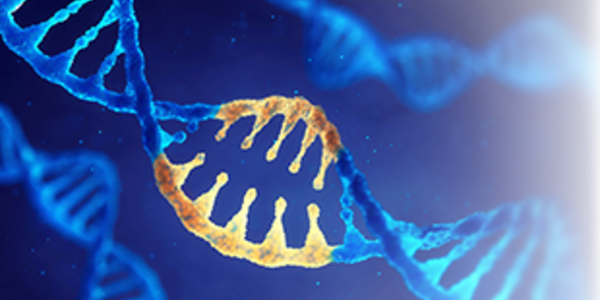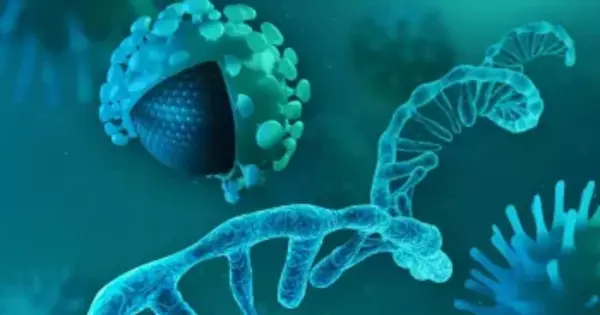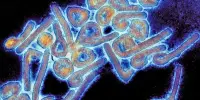Genome editing (also known as gene editing) refers to a set of technologies that allow scientists to alter an organism’s DNA. These technologies enable the addition, removal, or modification of genetic material at specific locations in the genome. There have been several approaches to genome editing developed. CRISPR-Cas9, which stands for clustered regularly interspaced short palindromic repeats and CRISPR-associated protein 9, is a well-known example. The CRISPR-Cas9 system has piqued the scientific community’s interest because it is faster, cheaper, more accurate, and efficient than other genome editing methods.
CRISPR-Cas9 is a revolutionary gene editing tool, but its applications are limited due to a lack of methods for safely and efficiently delivering it into cells. A research team recently developed a highly flexible CRISPR-Cas9 carrier using aminated polyrotaxane (PRX) that can not only bind to the unusual structure of Cas9 and transport it into cells, but also protect it from intracellular degradation by endosomes.
CRISPR-associated protein 9 (Cas9) and its companion protein, clustered regularly interspaced short palindromic repeats (CRISPR), made international headlines a few years ago as a game-changing genome editing system. The system, which consists of Cas9 and a strand of genetic material known as a single-guide RNA (sgRNA), can target specific regions of DNA and act as’molecular scissors’ to make precise edits. The direct delivery of Cas9-sgRNA complexes, i.e. Cas9 ribonucleoproteins (RNPs), into the cell nucleus is thought to be the safest and most efficient method of genome editing.
While some PRX-based drug carriers for nucleic acids and proteins have been reported previously, this is the first report on a PRX-based Cas9 RNP carrier. Furthermore, our findings describe how to precisely control intracellular dynamics at multiple stages. This will be extremely useful for future research in this area.
Professor Keiichi Motoyama
However, the Cas9 RNP has poor cellular permeability, and thus requires a carrier molecule to transport it past the first hurdle of the cell membrane before it can get to the cell nucleus. These carriers need to bind with Cas9 RNP, carry it into the cell, prevent its degradation by intracellular organelles called ‘endosomes,’ and finally release it without causing any changes to its structure.
A research team from Kumamoto University developed a transformable polyrotaxane (PRX) carrier that can facilitate genome editing using Cas9RNP with high efficiency and usability in a recent paper published in Applied Materials. “While some PRX-based drug carriers for nucleic acids and proteins have been reported previously, this is the first report on a PRX-based Cas9 RNP carrier. Furthermore, our findings describe how to precisely control intracellular dynamics at multiple stages. This will be extremely useful for future research in this area” Professor Keiichi Motoyama, the paper’s corresponding author, explains.
For their novel carrier, the research team focused on PRX with amine groups, i.e. amino-PRX, and went through multiple rounds of development and optimization before achieving their final product. For example, the first generation (1G) of their carrier molecules, exploited the autonomous transforming properties of amino-PRX to efficiently complex it with Cas9 RNP and enable its delivery past the cell membrane.

The second generation (2G) concentrated on endosome escape. This was accomplished by converting the amino-groups in amino-PRX into highly cationic (positively charged) particles within the endosome, causing the endosome to rupture and Cas9 RNP-amino-PRX to escape. The following generations addressed issues related to Cas9 release after the complex had escaped the endosome. Finally, they created the fifth generation (5G) multi-step transformable amino-PRX carrier, which was capable of precisely and efficiently delivering Cas9 RNP into the cell nucleus.
The researchers then conducted in vitro and in vivo experiments to confirm the system’s cytotoxicity as well as its genome editing efficiency. “Our delivery system has low cytotoxicity and its genome editing activity is comparable to the current most efficient system on the market,” says Kumamoto University Associate Professor Taishi Higashi, the study’s other corresponding author. “In addition, our repeated attempts at optimizing the delivery system across generations provide important information on the types and positions of various biodegradable groups and amino groups that can be used in such a system to further customize and adapt their properties.”
The autonomous action, multi-step transformable properties, and low cytotoxicity of the 5G amino-PRX carrier make it an extremely promising candidate for the safe and efficient delivery of Cas9 RNP. These findings could also be applied to the delivery of a wide range of molecules, such as enzymes, antibodies, and small interfering RNA (siRNA), making this novel carrier a significant achievement in the field of drug and vaccine development.
When genome editing technologies such as CRISPR-Cas9 are used to alter human genomes, ethical concerns arise. The majority of the changes brought about by genome editing are restricted to somatic cells, which are cells other than egg and sperm cells (germline cells). These changes are limited to specific tissues and are not passed down from generation to generation. Changes to genes in egg or sperm cells, or to the genes of an embryo, on the other hand, could be passed down to future generations.
The use of germline cell and embryo genome editing raises a number of ethical concerns, including whether it is permissible to use this technology to improve normal human traits (such as height or intelligence). Germline cell and embryo genome editing are currently illegal in the United States and many other countries due to ethical and safety concerns.
















